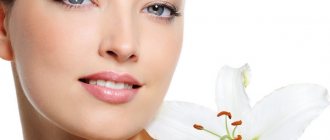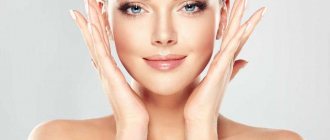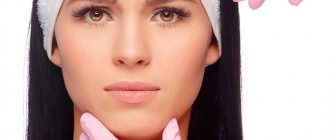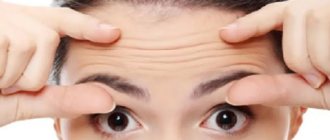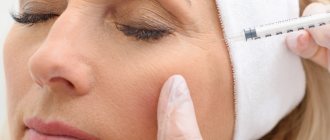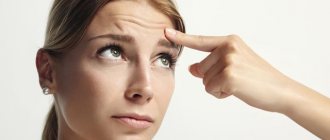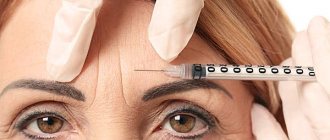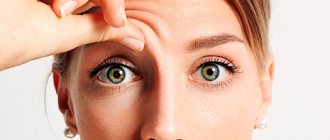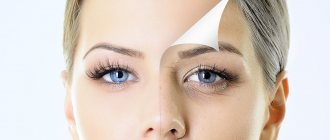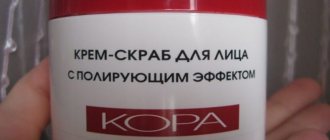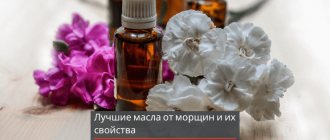Each botulinum toxin preparation has a unique production process, various excipients in its composition and specific units of action (AU). However, the effect of all BTA is mediated by an active neurotoxin with a molecular weight of 150 kDa, which is the same in all products registered in the Russian Federation.5
In this article, we will consider some features of abobotulinumtoxinA, which determine the level of its effectiveness and safety profile in the correction of facial (hyperkinetic) wrinkles.
Drug diffusion
In the literature, local distribution of botulinum toxins is often called diffusion. The field of action of BTA is the result of an active diffusion process during injection and a subsequent passive diffusion process.3
The local spread of BTA is believed to be related to the dose of toxin administered and the volume of injection9. The diffusion of BTA is not related to the size of the toxin complex in the product, since the complex dissociates under physiological conditions, releasing the active neurotoxin.13
The active neurotoxin with a molecular weight of 150 kDa is the same for all botulinum toxin medicinal products registered in the Russian Federation.13
In studies by Costa et al. 2012; Marques et al. 2007 dose- and volume-dependent local distribution was observed for all types of neurotoxins.4
In a study by Doris Hexsel et al in 2007, AboBTA and comparator (100 U botulinum toxin) were reconstituted in 2 ml and 1 ml of 0.9% saline, respectively. The non-standard dilution was chosen to provide a ratio of 2.5:1 units in the same injection volume (0.02 ml) per injection site. This means that an equal volume (0.02 ml) was injected with 5 and 2 units of botulinum toxin type A. Applied at the same volume and depth using the same technique, injections of two different commercial botulinum toxin preparations resulted in similar fields of action (local distribution) in relation to muscle and sweat gland activity.8
When undesirable effects such as ptosis occur, it can often be traced back to insufficient clinician experience or poor technique, leading to spread and subsequent diffusion into the musculature near the injection site.3
A little history
Botulinum toxin is a neurotoxin, one of the strongest organic poisons. When it enters the body with food, it blocks the transmission of nerve signals, causing muscles to stop contracting. Poisoning with it can lead to paralysis, respiratory arrest and even death.
Botulinum toxin, already as a drug, came to cosmetology from neurology. In the 50s of the 20th century, scientists found that a weak solution of poison relieves muscle spasms. And in the 1970s, American ophthalmologist Alan Scott began using a drug based on botulinum toxin to treat blepharospasm.
This therapy turned out to be quite successful. And complete relaxation of the eye muscle brought an unexpected bonus: the skin became smooth and wrinkles disappeared.
Since that moment, cosmetology has made a huge leap in the research and use of botulinum toxin for rejuvenation.
Botulinum toxin is often called Botox; in fact, these are two different concepts. Botulinum toxin is a chemical substance, botulinum neurotoxin of protein nature, which is produced by the bacteria Clostridium botulinum. Botulinum toxin type A (BTA) is used in cosmetology.
Botox is the trade name of the first drug created on the basis of BTA. In 1989 it was approved for use. And in 2002 it was registered as a product that can be used in cosmetology.
The most famous analogues of Botox: Botulax, Dysport, Xeomin, Meditoxin, Nabota, Neuronox, Refinex, Relatox
Effect duration
Studies have shown that Dysport maintains a natural and long-lasting aesthetic result if used in the recommended dose.
Thus, Anna Rostedt Punga and colleagues in 2016, assessing the duration of action of 50 units of AboBTA (Dysport) for the correction of glabellar wrinkles, observed the persistence of the effect in 59% of patients after 4 months and in 17% of patients even by 6 months after injection.14
According to the instructions for medical use of the drug Dysport (section method of administration and dose, indication “temporary correction of hyperkinetic facial folds...”) “...it is possible to increase the interval between injections of the drug to 6-9 months.”*
However, the effect of repeated repeated procedures (treatment response rate) remains the same as with the first procedure.11
The amount of active neurotoxin significantly influences therapeutic efficacy: the greater the amount of 150 kDa neurotoxin, the greater the ability to cleave SNARE substrates.6
Field M. and colleagues in 2022 quantified the active 150 kDa neurotoxin in vials of three commercial botulinum toxin preparations.5
These values were used to calculate the amount of 150 kDa BTA per manufacturer-designated unit of each neurotoxin. To present these results in a clinically meaningful manner, the amount of active 150 kDa neurotoxin of each BTA preparation was calculated at the recommended dose for the indication correction of glabellar lines.
It was found that with Dysport, a greater amount of active neurotoxin is administered than with other products in doses approved according to the instructions for medical use.
The authors conclude that the higher amount of active neurotoxin in AboBTA may block neurotransmitter release at the neuromuscular junction for a longer period of time, providing longer-lasting clinical effects.5
Contraindications to botulinum toxin injections
Like any medicine, drugs based on botulinum toxin type A have their contraindications. There are few of them, but they still exist, and you should know about them.
Botox injections are contraindicated if you have:
- individual intolerance to the components of the drug;
- neurological diseases: myasthenia gravis, myasthenic syndrome, Lambert-Eaton syndrome;
- any diseases in the acute phase and chronic diseases in the acute phase;
- infectious and/or inflammatory diseases at the site of the intended injection;
- hemophilia;
- period of pregnancy and lactation;
- mental illness.
A relative contraindication would be age under 20 years and over 65 years.
The absence of indications for the procedure is also a contraindication. The job of a competent doctor is to determine whether you really need this procedure.
Immunogenicity
Immunogenicity is the ability of a protein to induce an immune response and therefore stimulate the formation of antibodies.19
Antibodies that block the pharmacological effect of BTA are called neutralizing antibodies (NA), while antibodies specific to non-toxic clostridial proteins, which are collectively called complexing proteins, are called NON-neutralizing or binding antibodies1
Clinically, the formation of neutralizing antibodies may reduce the effectiveness of subsequent treatment, however, Cohen and Scuderi in 2022 showed that this is not always the case.3
Doses of BTA used for aesthetic indications are low, and the absence of a significant number of patients in the literature indicated that the development of resistance to AboBTA treatment due to the formation of neutralizing antibodies is extremely unlikely.17, 18, 20
When to expect results
So, botulinum toxin has been injected, and you can’t wait to see your younger reflection in the mirror.
The first effect of the procedure will begin to appear in 3-5 days. The final result will be formed by 12-14 days.
At this stage, the doctor usually prescribes a follow-up consultation, where he records the changes that have occurred and examines the patient. And based on the results, a decision is made to carry out a correction. Most often, no corrective procedure is required.
The duration of action of botulinum toxin is on average 6-8 months. But, everything is individual. The duration depends on the dose of the administered drug, on facial activity, and even on the person’s immunity.
After Botox is removed from the body, facial activity returns in full.
Security Profile
The safety profile of AboBTA for the correction of fine lines and wrinkles has been demonstrated in numerous studies.
Kane et al. in 2009, examined the level of effectiveness and safety profile of various dosages of AbobotulinumtoxinA in 816 people randomized in a 2:1 ratio to AboBTA (50, 60, 70 or 80 units) or placebo. The incidence of adverse events (AEs) was comparable to placebo. The majority (93%) of AEs were mild or moderate and were considered not related or unlikely to be related to treatment in both groups.23
Brandt et al. in 2009, the safety profile of a single injection of AboBTA was assessed in 105 patients. As in the study described above, most AEs were mild or moderate and were considered not related or unlikely to be related to treatment in both groups. The most common reactions were observed at injection sites; isolated cases of nasopharyngitis and headache were noted. The incidence of eyelid ptosis in the AboBTA group was 3/105 compared with 0/53 in the placebo group. All 3 events were mild and transient. No formation of neutralizing antibodies (NA) was detected.2
At the same time, AboBTA proved an optimal level of effectiveness and a favorable safety profile after several cycles of injections. Thus, Ronald Moy and colleagues in 2009 assessed the long-term safety profile and level of effectiveness of AboBTA in patients with glabellar lines. A total of 1,200 patients underwent 5 procedures over 13 months. Treatment response rates at maximum frowning 30 days after injection remained high for 5 cycles (84% in cycle 1; 90% in cycle 2; 91% in cycle 3; 88% in cycle 4 and 80% in cycle 5). eleven
Joel Schlessinger et al performed 8 procedures on 267 patients over 24 months in 2014, and no patients were excluded from the study due to lack of efficacy or adverse events. After 8 treatments, the response rate remained the same as the first treatment (92.4% for cycle 1; 92.4% for cycle 8).20
Thus, Dysport has a favorable safety profile comparable to placebo, as demonstrated in clinical studies3, 11, 20 and in real-world clinical practice.7
Summary of international expert consensus recommendations (all areas) for the use of AboBTA. 16
| Specifications | |
| Preparation | Using a needle, draw out the required amount of 9% sterile saline solution. It is advisable to turn the bottle with light rotational movements to mix the lyophilisate with the solvent. The resulting solution is a colorless transparent liquid. |
| Breeding | 500 units – 2.5 ml, 300 units – 1.5 ml. The concentration of the resulting solution will be 20 units per 0.1 ml. |
| Storage | Store at temperatures between 2 and 8 °C. Do not use after the expiration date indicated on the bottle. |
| Introduction | After drawing AboBTA into a sterile syringe, ensure that any air bubbles are removed. |
| Use of on-label | Depending on the area of correction, a dynamic study is performed at the request of the patient. Performed by moving specific muscles, palpating force points and mapping with a pencil |
| Amount of drug | Select the dose according to individual needs to obtain a natural result or a pronounced correction depending on muscle mass and the preferences of the doctor and patient |
| Conversion factor | The units of action of the drug are specific and cannot be used for conversion when using other drugs containing botulinum toxin. It should be based on the recommendations in the instructions for medical use of the specific botulinum toxin drug. |
| Preparation for the procedure | |
| Patient position | The correction can be carried out with the patient sitting, semi-sitting or lying down. |
| Injection technique | After taking photographs or recording videos, treating the skin with a disinfectant, experts suggest applying injection points while performing facial movements |
| Instruments for insertion, depth | To administer AboBTA, experts recommend using a 0.5–0.3 ml insulin syringe with an 8 mm 29-30G needle. The needle is advanced through the skin into the underlying muscle. The depth of injection can be subcutaneous or intramuscular, depending on the depth of the muscle and other anatomical features. Some practitioners prefer to insert the needle directly during muscle contraction and inject the drug into the relaxed muscle. |
| Duration of effect | The muscle relaxant effect of the drug Dysport on the facial muscles of the face is clinically manifested on days 2-3 after administration and reaches a maximum on days 14-15.* The average duration of effect, estimated by experts, is 120-180 days for single procedures and up to 4-6 months for repeated courses. Cases lasting more than 6 months have been reported. It is possible to increase the interval between drug injections to 6–9 months.* |
| Post-injection recommendations | |
| Additional correction16 | To accurately select the dose of the toxin at some points and/or to evaluate the effect, after 10 days is recommended, especially for patients receiving treatment for the first time. It is recommended to carry out corrective procedures no later than a month after the first procedure. |
| Immunogenicity | In expert experience, the percentage of patients who do not respond to therapy (possibly due to the development of neutralizing antibodies) is less than 0.1%.12 |
| After the procedure | After correction, some experts advise patients:
|
| Age and maximum dosage | Dysport is indicated for the temporary improvement of the appearance of moderate to severe facial hyperkinetic folds (expression lines) in adults under 65 years of age.* The total recommended dose for a single injection into all four areas (the glabellar region, the forehead, the outer corner of the eye and the back of the nose) should not exceed 200 IU.* |
How is botulinum toxin used in cosmetology?
In cosmetology practice, botulinum toxin type A injections are a very effective rejuvenation technique. The secret to the popularity of beauty injections lies in quick results and high efficiency.
Moreover, the drug is suitable for working with any area.
| Zone | What problem does it solve? |
| Upper third of the face | horizontal forehead wrinkles; horizontal and vertical wrinkles in the eyebrow area; eyebrow shape correction "crow's feet" |
| Middle third of the face | “bunny wrinkles” on the bridge of the nose, nasolabial fold |
| Lower third of the face | purse-string wrinkles of the orbicularis labii muscle puppet wrinkles drooping corners of the mouth "bulldog cheeks" or jowls face oval lifting |
| Neck | “Rings of Venus” – deep horizontal creases of the platysma band – vertical wrinkles |
| Armpits | hyperhidrosis or excessive sweating |
Most often, Botox is used to correct facial wrinkles in the upper third of the face. In the middle and lower third of the face, as well as on the neck, BTA is injected much less frequently.
Today, with the help of botulinum toxin, you can correct the shape of the nose by relaxing the tip of the nose. And even correct a gingival smile: injections into the muscle that lifts the upper lip and the wing of the nose will help.
A gingival smile is an aesthetic defect when, when smiling, the teeth and partially the gums are completely exposed.
An experienced doctor can perform a facelift/lift using botulinum therapy correctly.
Also very widely used in cosmetology are botulinum toxin preparations for the treatment of hyperhidrosis – localized excessive sweating. Injecting Botox into the armpit area will relieve the problem and associated discomfort for up to six months.
The successful use of neurotoxin in cosmetology does not mean that everyone needs to be injected with it for any reason. Everything has its own indications and prohibitions.
The mechanism of action of beauty injections
When we smile, frown, wonder, squint, facial wrinkles appear. This is our muscles tense.
Normally, nerve impulses are transmitted at the point where the muscle connects to the nerve ending. This releases a neurotransmitter called acetylcholine, which causes muscle contraction.
When botulinum toxin is injected into the target muscle, its active molecules penetrate through the membrane of the nerve ending into the interior. The neurotoxin then cleaves certain proteins at the fusion site, thereby blocking the release of acetylcholine. And the neurotransmitter remains sealed inside the nerve ending.
Thus, the neuron continues to work as usual, but muscle contraction no longer occurs.
When the muscle is relaxed and does not tense, existing wrinkles are smoothed out and new ones do not appear.
Wrinkle correction
The main purpose of using botulinum toxin in cosmetology is to eliminate wrinkles.
Wrinkles are:
- facial – arise when we show a wide variety of emotions. Facial muscles actively move, stretching or compressing the skin. Such wrinkles appear only during facial expressions; in a calm state they are not visible;
- static or age wrinkles. Over time, our muscles and skin weaken, losing their former elasticity and firmness. They “slide” down, forming unsightly ridges, creases and folds. These wrinkles are clearly visible even on a relaxed face.
The injection of botulinum toxin is equally effective in correcting wrinkles of different types. In addition, it prevents the appearance of new ones, thereby slowing down the aging process.
Deep age wrinkles cannot be corrected with Botox
